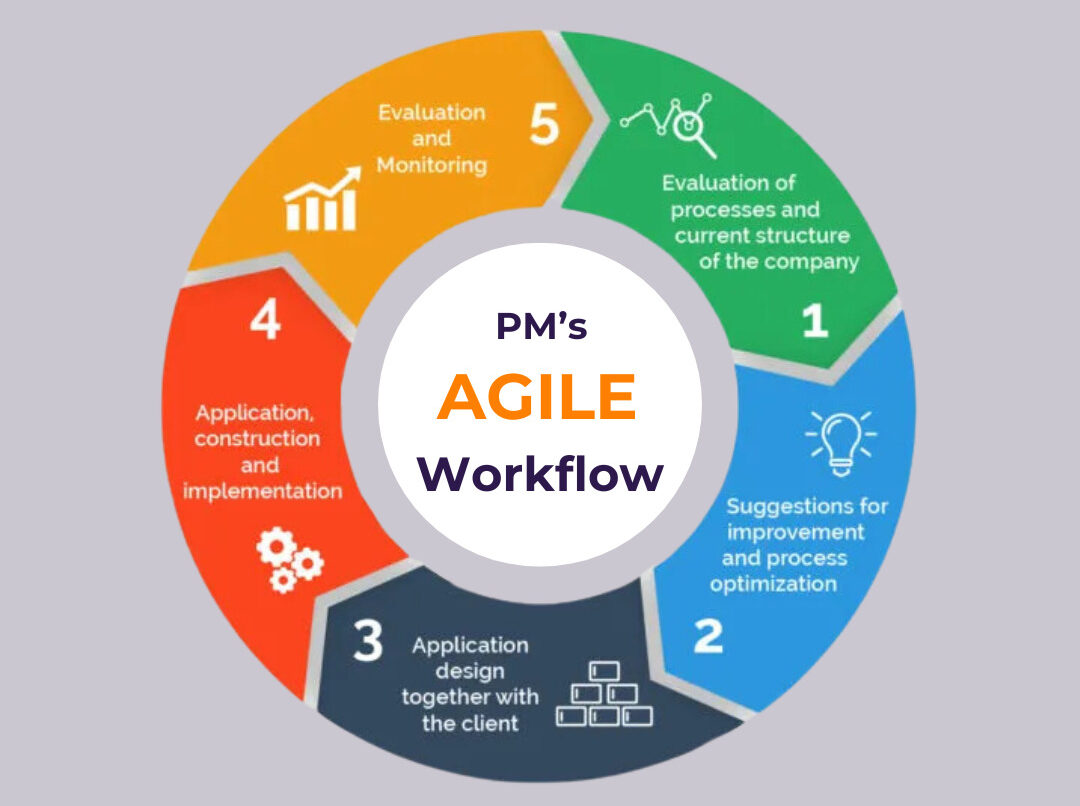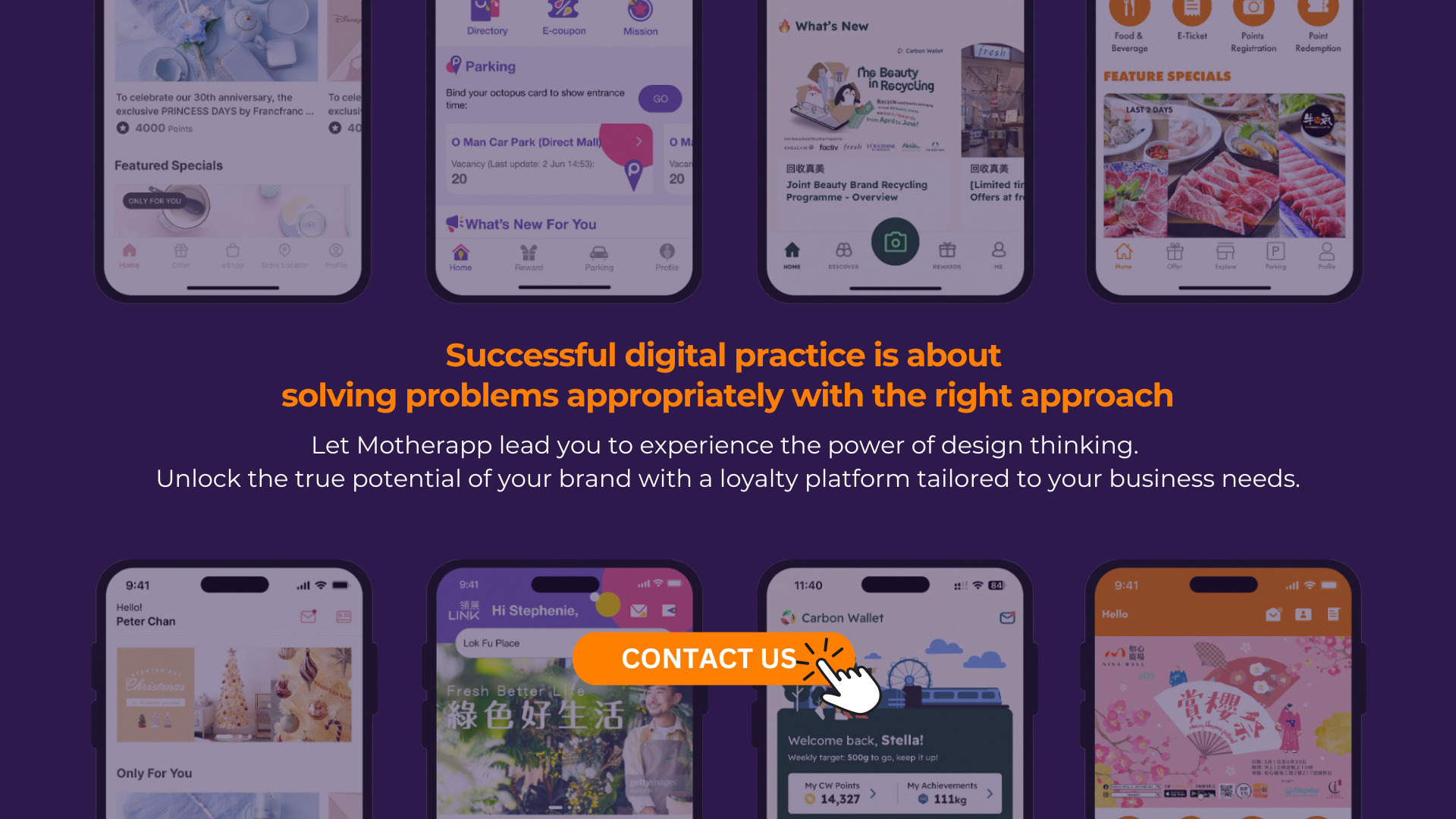The Art of Project Management: Why Project Management is Indispensable in App Development
In the wave of digital transformation, applications are an important bridge for interaction between businesses and consumers. As mentioned in our user experience insights article, companies can develop various types of applications for different purposes, such as membership applications developed to meet client needs, or internal management applications designed to improve work efficiency.
However, a successful application not only requires excellent user experience (UX) and user interface (UI) design, but also strong project management (PM) support behind successful app development. Strong project management not only ensures the smooth progress of the development process but also provides stability and efficient responses in a changing environment and technical challenges, enabling the project to be successfully implemented within the established resources and time frame. Today, we interviewed the project management team at Motherapp to discuss why project management is indispensable in application development.
What is Project Management and a Project Manager?
Project Management refers to the process of achieving specific project goals within limited resources and time through planning, organizing, coordinating, and controlling. Project management encompasses various stages from requirements analysis, design, construction, testing, to completion, ensuring that each phase proceeds smoothly and achieves the expected results. It is important to note that project management is not necessarily confined to the technology sector; different industries initiate new projects based on their unique characteristics and goals. Since enterprise resources are limited, to minimize project costs and ensure optimal resource utilization, these projects require the assistance of Project Management Professionals.
To this end, a Project Manager (PM) helps manage projects by developing detailed project plans that include timelines, resource allocation, and risk management. The presence of a project manager ensures that different development stages of the project are delivered on time, meet the expected quality standards, and assist in handling unforeseen risks.

The Key Role of a Project Manager
We can see a Project Manager as the Single Point of Responsibility for the project, who needs to coordinate between the client and the company’s internal development team. In an application development project, multiple roles and departments are typically involved, such as engineers and product designers. Each role focuses on its own tasks and is responsible for completing specific parts.
The primary task of the Project Manager is to have comprehensive control over the entire project, ensuring that the work of each role progresses smoothly. They will engage in one-on-one communication to ensure coordination and cooperation across all phases, from requirements gathering to project delivery. They need to ensure that each phase proceeds smoothly, ultimately meeting the needs of the client and users. In essence, every detail of the project is closely related to the Project Manager, making them a crucial factor in the project’s success.
Project Manager’s Workflow
Generally speaking, the workflow of a Project Manager typically includes:
Confirm Project Objective
The primary task of the Project Manager is to engage in in-depth communication with clients and stakeholders to confirm the specific objectives and expectations of the project. This includes understanding the project’s vision, key functional requirements, target user groups, and expected business value. Through detailed discussions and confirmations, ensure that all relevant parties reach a consensus on the project objectives.
Define Project Scope
After confirming the project objectives, the Project Manager needs to clarify the scope of the project, which includes determining the project’s boundaries and limitations, listing all major tasks, and defining acceptance criteria. A clear project scope helps to avoid scope creep and ensures that the project team focuses on completing core tasks.
Project Planning and Design
Detailed project planning, such as developing timelines, allocating resources, and setting phased objectives, is the planning that the Project Manager needs to carry out to ensure that each phase of work has clear guidance and deliverables.
Manage Project Organization
The Project Manager is responsible for managing the project team, ensuring that each member can leverage their expertise and work collaboratively. A project typically involves multiple roles and departments, and the Project Manager needs to have comprehensive control over the entire project organization, ensuring smooth cooperation among different roles and coordination across all phases.
Project Management and Monitoring
During the project execution, the Project Manager needs to continuously monitor the project’s progress, ensuring that each task proceeds as planned. Additionally, the Project Manager must possess keen problem identification and resolution skills, being able to promptly identify and address issues and risks, develop contingency plans, and take swift action when problems arise.
As project management methodologies continue to evolve, many Project Managers now choose to use Agile Methodology for managing projects. Compared to the traditional Waterfall Methodology, Agile development offers greater flexibility, helping Project Managers respond to changes that may occur during the project.

Read More: Waterfall yet flexible – the hybrid-agile project execution
Importance of Project Management
Ensuring Project Progress and Quality
The primary objective of project management is to ensure the project’s progress and quality. As mentioned earlier, project management can ensure that every stage of development maintains a certain quality and is completed within the stipulated time through detailed project planning. In application development, the design and development processes often need to cope with uncertainties and changes. The Project Manager needs to manage and monitor progress, ensuring the project can adapt flexibly to changes while avoiding delays and cost overruns.
Resource Optimization and Collaboration
With limited resources, the Project Manager ensures that key features and tasks are prioritized by adjusting priorities and allocating resources reasonably. The Project Manager needs to ensure that relevant team members, such as designers, developers, and testers, can collaborate effectively to ensure seamless integration of development tasks and jointly advance the project. This involves the optimal allocation of resources, ensuring that each member’s skills and time are utilized effectively, thereby enhancing overall efficiency.
Avoiding Common Project Pitfalls and Coping Strategies
Timely Communication and Feedback
During the design phase, stakeholders at different levels may have varying expectations of the final product. Internally, there may be more than one idea, especially regarding the application’s functional details and visual design.
To facilitate smoother communication, it is effective to present the expected outcomes to different stakeholders within the organization early in the design process to obtain feedback and approval promptly, thereby avoiding communication misunderstandings. Clearly defining the roles and expectations of managers at all levels at the beginning of the project is crucial. Additionally, pre-setting the times and processes for design reviews ensures that all parties have a consistent understanding of the progress.
At each design stage, it is also essential to clearly indicate the involvement level and required feedback from different relevant departments. Early demonstrations of design demos to management allow them to understand the design effects in advance and provide input. Through iterative design feedback, ensure that the final outcome meets all stakeholders’ needs. For example, arranging design review meetings early and inviting managers at different levels to participate, showcasing the latest design progress, and collecting their feedback can effectively prevent major issues from being discovered only after the design is completed, thus saving the project’s overall time and resources.

Gap Analysis
In the application development process, insufficient understanding of application functionalities by the client can lead to subsequent requirement changes and inconsistent expectations, or even result in requests that deviate significantly from the existing app product framework, extending the project timeline or impacting the original resource allocation. To avoid this situation, conducting a detailed gap analysis at the beginning of the project is a strategic approach.
At the start of the project, the Project Manager can engage in in-depth discussions with the client, providing detailed demonstrations and explanations of the functionalities to ensure they understand the specific operations, applications, and limitations of the existing product. Through practical demonstrations, the client gains an intuitive understanding of the product. When the client proposes new requirements, the Project Manager can evaluate the impact on resources and time, determining how these requirements affect the project timeline and resource allocation. Discussing with the client and reaching a consensus on which requirements will be included in the project, and understanding the overall impact of these adjustments on the project, such as delays or budget increases, is crucial. Establishing a transparent communication mechanism and regularly reporting project progress to the client ensures they are aware of the project status and potential changes. Using a change control process ensures that all requirement changes are carefully evaluated and discussed, preventing frequent changes later on.
Secrets to Successful Project Management
Unified Consensus and Clear Vision
A successful application development project requires establishing a unified consensus and a clear vision during the project initiation phase, which is crucial for all participants. Such consensus ensures that everyone can move toward a clear final goal, following the direction that should be adhered to during different stages of the development process. The Project Manager should engage in deep communication with all key stakeholders to clarify the project’s mission and acceptance criteria, avoiding disagreements during the development process.
For companies looking to develop an application, the first step is to unify the internal expectations of the application. Different departments often have varying understandings and focuses, for example, the IT department may be more concerned with the system’s technical specifications, while the marketing department may focus on how to use the app to achieve marketing goals. Therefore, it is recommended that companies conduct thorough internal assessments before project initiation, prioritize tasks, and confirm whether these goals can be achieved.
In this process, the role of the Project Manager is especially important. They need to manage everyone’s expectations and continuously provide relevant information, so that every team member understands the project’s progress and potential impacts.

Achieving Expected Results Within Reasonable Time and Resource Limits
A successful project must also achieve expected results within reasonable time and resource limits. Even if the product is delivered on time, it will not be considered successful if it significantly exceeds the budget or the original development schedule. Therefore, the Project Manager must carefully monitor progress at every stage of the project, ensuring that each task is carried out within controllable limits to achieve optimal resource utilization efficiency.
To avoid exceeding the original resource limits, starting small and gradually expanding is a strategy used by many successful applications. Companies can begin in the first phase by launching an application with basic functionalities in the shortest possible time to quickly enter the market and establish a foothold.
After the launch, they can continuously optimize and expand functionalities based on user feedback and collected data analysis. This not only increases user engagement but also helps companies better understand market needs and user behavior in practice. For instance, companies can analyze market preferences using user data from the first phase, identifying which features are more popular and which activities receive lukewarm responses. This data-driven approach helps companies find the right development direction, thereby effectively reducing development risks and avoiding resource waste.
Thus, while thinking about the big picture is very important, the most effective approach is to start small. This allows companies to quickly enter the market and gain valuable data to support future business development. Through this method, companies can respond more flexibly to market changes and ultimately achieve the desired business outcomes.
Summary
In the application development process, project management is a key factor in ensuring the success of the project. Through detailed project planning, resource optimization and collaboration, risk management, and problem-solving, the Project Manager can ensure the project’s progress and quality, ultimately meeting needs of clients and users.
Whether they are designers, developers, or testers, their efforts and professional skills need to be maximized under the coordination of the Project Manager. Through the art of project management, app development can not only be completed on time and with quality but also stand out in the market competition, bringing real value to enterprises and users.
Successful digitalization is about solving the right problem in the right way
Discover the art of solving the right UX problems with Motherapp’s design thinking and innovative solutions – transform your digital experience now!
Contact us now for more professional advice and one-on-one consultation.
Keep up with us – follow us on social media!

